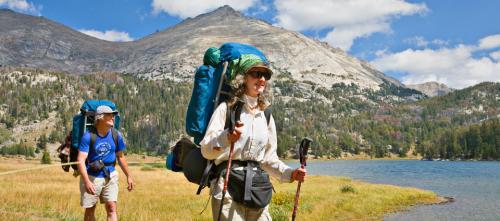Tips for Backcountry Journeys

Man and woman backpacking in the Wyoming Range
Jeff Fox
Hiking into the backcountry — true wilderness without roads or amenities — offers a chance to experience real adventure.
Backcountry hiking journeys aren’t for everyone. Physically and mentally challenging, they test your strength and stamina but reward you with unforgettable experiences.
Preparing for backcountry hiking
Backcountry camping and hiking requires careful preparation. You will need to educate yourself on bringing the right gear and provisions and on how to stay safe.
When you arrive at your location, make sure to check in with the ranger station to notify them of your presence and learn about trail conditions. You can also get any necessary permits for backcountry camping there.
Protect backcountry
Wild creatures make their homes in the backcountry and humans are just visitors. We can respect the last few bastions of pristine wilderness by following a few guidelines:
- Follow Leave No Trace principles
- Stick to established trails
- Use a campstove to cook food instead of starting fires
- Do not feed wildlife
Find your backcountry
Roadless areas in national forests and federally designated wilderness areas provide some breathtaking backcountry hiking and camping.
The National Wilderness Preservation System includes designated wilderness land that is preserved and managed by various federal agencies, including the National Park Service and National Forest Service.
Helpful links
- Leave No Trace:
- Map to find a wilderness area:
http://www.wilderness.net/map.cfm
- National Park Service’s backcountry trip planner:
http://www.nps.gov/yell/planyourvisit/upload/bctrip-planner_2012.pdf
- National Wilderness Preservation System map:
